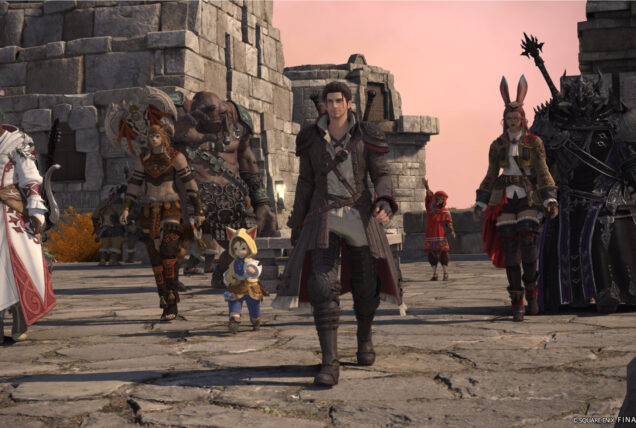An inside look at the creative process behind Assassin’s Creed Mirage.
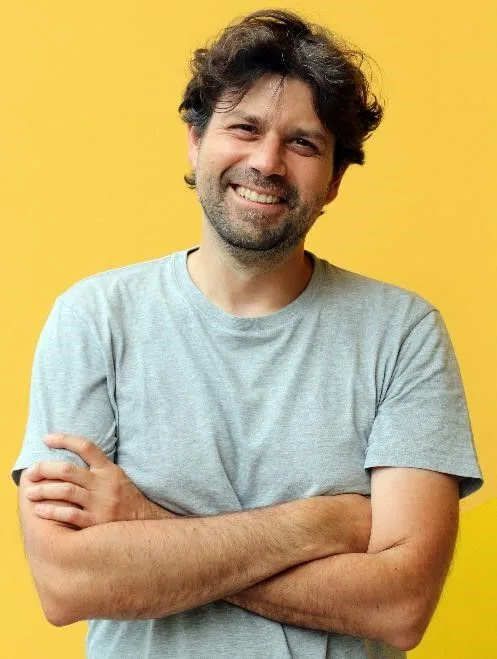
Stéphane Boudon has been with Ubisoft since 2005, beginning his career at the Ubisoft Paris studio. As a Level Designer, he worked on notable titles such as the Red Steel franchise, Rayman Raving Rabbids, and Ghost Recon: Future Soldier, before advancing to Senior Game Designer on Watch Dogs.
In 2014, he became Lead Level Designer and later Content Director for the Ghost Recon franchise, contributing to the successful launches of Ghost Recon Wildlands (2017) and Ghost Recon Breakpoint (2019). In 2018, Stéphane was among the first pioneers to join the newly established Ubisoft Bordeaux studio as Creative Director. There, he played a pivotal role in building the studio’s teams and contributed to projects like Ghost Recon Wildlands: Year 2 and Mercenaries. He later led the development of Assassin’s Creed Valhalla: Wrath of the Druids expansion, released in 2021. Stéphane now serves as the Creative Director for Assassin’s Creed Mirage.
Can you share your journey to becoming the creative director for Assassin’s Creed Mirage? What does it mean to be a creative director in the development process of a game?
As a youngster, I was always torn between art and design, and I was deeply sensitive to the strong emotions games could evoke. I grew up playing both PC and consoles games, so my foundational games are quite varied. Initially, what drew me to this industry was computer graphics (CG). At that time, cinematics felt like one of the greatest rewards a game could offer, and learning CG was more accessible as an autodidact compared to code my own game.
Eventually, I attended art school and while I was there, the school opened a dedicated video game section — one of the first in France. This opened my eyes to the fact that video game production could be possible without an engineering background. I learned coding, scripting, design and optimized art— essentially everything needed to go become an indie game designer.…except indie was not even a thing then.
After graduating, I began my career at Ubisoft as a level designer. I’ve always loved architecture and combined with design; it was a perfect fit for me. As a level designer, I learned that this role is really at the nexus of game development, where you interact with every discipline and absorb so much from the experts around you. I became increasingly proficient in pacing, spatial design, environmental storytelling and creating within constraints. Over time, I had the opportunity to try various roles —game design, technical design, management — and eventually moved into creative direction. And here I am.
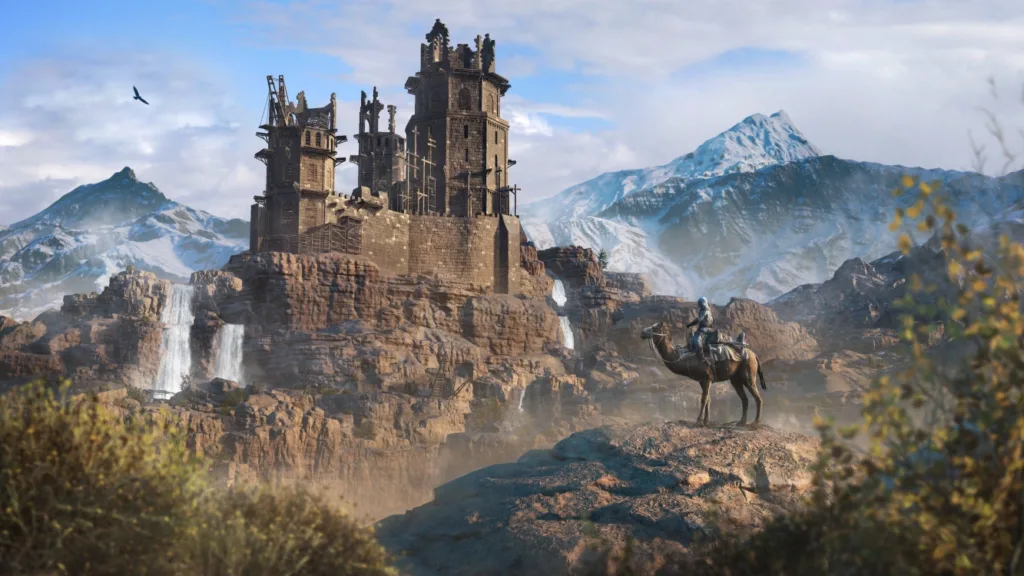
First and foremost, being a creative director is about defining a clear vision and scope for the game —the dos and the don’ts. It’s about providing a framework and, within that frame, inspiring people. A creative director engages other directors, each in their own discipline, to aim for the same purpose with a shared set of references. The role also involves collaboration and listening. Each member brings great ideas— they know their job, their constraints, and how to deliver within them. At a holistic level, the creative director must decide what will be impactful, what will create momentum and how to fulfill the vision’s promises. Ultimately, the goal is to answer key questions for the players: Did I feel like I belong in this world? Did everything make sense? Did I feel something?
To me, being a creative director means being able to dive into the micro-details and then quickly zoom back out to the macro view to adjust everything. But most importantly, it’s about being able to doubt and question yourself—not fundamentally, but in a way that keeps your thoughts flexible and adaptive. Video game production is a wild ride where only a few things will go exactly as planned. That said, I still have so much to learn. This is just the beginning of my journey as a creative director.
What was the initial creative vision for Assassin’s Creed Mirage, and how did you develop and refine that vision throughout the game’s development?
When I started at Ubisoft Paris, the first Assassin’s Creed was released two years later. It was groundbreaking— technologically, with its graphics, the systems and parkour— but also in its structure, placing player freedom and initiative at the center of the experience. Working on this franchise has been a long-held dream of mine. I even had an opportunity to move to Montreal to work on it in 2008, but I had to decline for personal reasons. In a way, Mirage was my chance to go back in time and seize that opportunity. Many team members also have personal stories tied to the Assassin’s Creed saga, which is probably why we can confidently say Mirage is genuinely rooted in pure nostalgia.
The initial creative vision for Mirage was straight forward: we wanted to take a different direction from Valhalla and revisit the feeling and imagery from the earlier Assassin’s Creed games. We envisioned a “coming-of-age” story where the player becomes an Assassin in a sprawling city.
Once the pitch was approved, we refined the vision through production challenges, creative decisions and feedback from internal playtests. For example, the game’s earliest vision included a more systemic, organic investigation board. As production progressed, stealth took more central, and player agency in gameplay was pushed even further. Of course, some ambitions had to be revised due to technical constraints or the time limitations —such is the nature of game creation. It’s about understanding your team’s expertise, learning from the process and remaining adaptable. Ultimately, I hope Mirage follows the path of its predecessors respectfully while also bringing a sense of modernity, a strong pace and more immersive systems.
When conceptualizing Mirage, what were the key elements you wanted to emphasize in terms of the player’s experience? How did you ensure those elements remained central throughout the game’s design?
The key elements we aimed to emphasize were Stealth, Parkour and Assassination. To anchor these key elements, we established three main pillars at the very beginning of development: Becoming an Assassin, the Immersive City and the Impactful Journey.
While creating foundational pillars for driving a game is not a new concept, the real challenge lies in getting them right. Our approach —and the lessons we learned— was that these pillars much never contradict one another. Most importantly, they must work in synergy. If a single feature supports more than one pillar, it’s likely a win. But If a single feature enriches all three pillars, then you’ve found a core feature— one worth prioritizing.
These pillars became immutable throughout the development process, serving as a guiding framework for conceptualizing the experiences we wanted to deliver, prioritizing features and content to stay true to the game’s vision, communicating our goals within the team and overcoming challenges by providing clarity during debates.
What was the initial creative vision for Assassin’s Creed Mirage, and how did you develop and refine that vision throughout the game’s Can you talk about your approach to shaping the atmosphere and tone of Assassin’s Creed Mirage? How did you integrate historical accuracy while maintaining a captivating and immersive world?
We started our research on Baghdad very early on, and the more we learned, the clearer it became that this city was the perfect setting for our game. At the time, Baghdad was the center of the world—a vibrant, lively city that made for the ideal playground for aspiring Assassins. Rebuilding Baghdad, however, posed unique challenges; unlike previous Assassin’s Creed games, almost nothing from this time has survived to the present day. As with every other title in the franchise, we took creative liberties to deliver an entertaining and engaging experience while reaming respectful to the city’s culture and history.
This combination of internal expertise and external research helped us reimagine the Lost City of Peace. Finally, our Art Director, Jean-Luc Sala, grew up in the late 70s on the Persian side of the Tigris River—a place he remembers vividly and still holds dearly in his heart— allowing him to capture the lights, mood and atmosphere with incredible authenticity.
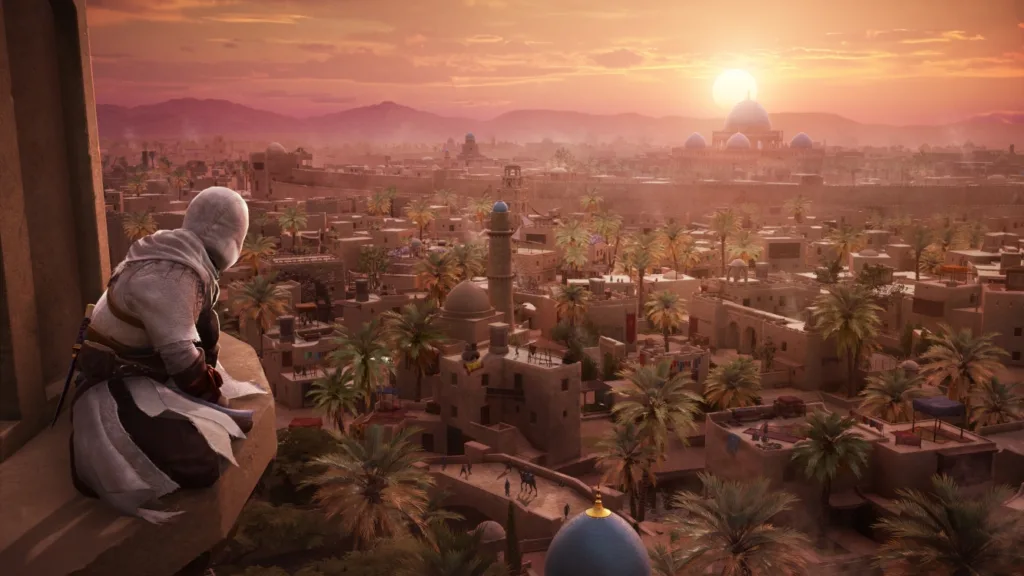
What were some of the biggest creative challenges you encountered during the development of Mirage? How did you approach solving these challenges to maintain the game’s integrity?
One of our biggest creative challenges was the wanted system. We struggled to make it work effectively, even as we reached the Beta stage, where it still wasn’t quite right. Achieving the proper balance required consistent polishing, as we tweaked every parameter to ensure the system felt fair and flowed at the right pace— a delicate equilibrium to strike. In the end, the effort was worth it, as the wanted systems became one of the game’s standout features, praised by the community for transforming Baghdad into a living, responsive city. Solving this challenge took time, through playtesting, continuous iterations and a shift to a player-centric mindset that allowed us to fine-tune the system until it truly enhanced the player experience.
As a creative director, how do you foster collaboration with other departments (art, narrative, gameplay) to ensure a unified creative vision? Can you give us an example of how these collaborations worked for Mirage?
Fostering collaboration across departments requires clear communication, sharing the creative vision, dedicated review time with directors and strong teamwork. While we achieved a great deal on Mirage, I believe there’s always room for improvement, as each production brings valuable lessons and opportunities for growth.
One key area I aim to refine in future projects is being even more precise on the structural elements of the game, clearly stating when we’re exploring uncertain territory that may require significant iteration or even failure. It’s also important to never take anything for granted and to articulate the obvious when needed. To achieve this level of collaboration, it’s essential to rely on a strong support system and to delegate effectively.
Were there any specific inspirations—whether from history, art, or other media—that played a significant role in shaping the creative direction of Assassin’s Creed Mirage?
Influences and inspirations are very important for us; they help frame the game and allow us to be creative on top of strong foundations. They can come from various horizons such as games, movies and books. You must know your classics, too. Like cinema before us, talented teams and creators paved the way for defining the vocabulary of the video games and how to express yourself within it. Those are valuable lessons for both what could work and what to avoid.
For Mirage, in terms of gameplay, we had several inspirations— from the first Assassin’s Creed to other references such as Dishonored, Hitman and more. I guess you can find a bit of all those games in Mirage.
Of course, movies, tv shows, books and historical texts are also a major part of our day-to-day inspiration when it comes to art, realization and reproducing an authentic world.
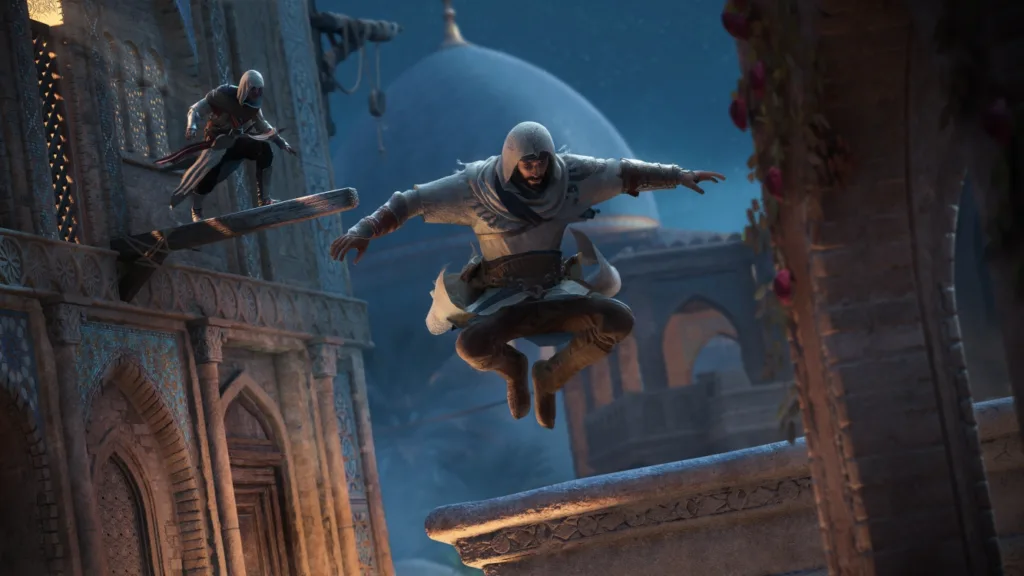
In what ways did you push the creative boundaries of the Assassin’s Creed series with Mirage? How do you ensure each game in the series brings something new to the table without losing its core identity?
What we can reflect on today is how we succeeded, but maybe two aspects could emerge: The first one, probably driven by the love of the franchise, is how we succeeded in being respectful of the genuine material of the series and, in doing so, being respectful of our fans. The second could be in this will for giving back agency in gameplay to the player.
As for the franchise, one of the strengths of Assassin’s Creed is “History as your playground.” Renewal here is everywhere and almost endless. On top of that, Mirage proves that many types of Assassin’s Creed games can exist. Everything is permitted. It’s also by cultivating the identity of our studios and the people within them that we will be able to bring fresh and new experiences in the future.
How do you, as a creative director, engage with the fanbase during development? How does fan feedback influence your creative decisions for the game?
I’m myself a big sponge on social media when I work on a specific game. With Assassin’s Creed, we have a wonderful and extremely active community. It nourishes me a lot. Most of the time, I see people wondering if the developers will see this or will read that. I can’t speak for everyone, but I probably did!
Fortunately, beyond my own curiosity, we organized many players listening sessions throughout the pre-production and conducted regular testing during the production phase of Mirage:
- On social media: Our Com Dev spent a lot of time on Reddit and Discord to hear feedback from the community and shared it with the core team.
- Customer studies: We tested our concept during the conception phase, and reception was enthusiastic, showing high expectations around the game pillars and its “back to the roots” positioning.
- Community workshops: We invited a pool of hardcore players to Bordeaux, France to try out the game and collect their feedback.
- Early-stage testing: Players had access to the game at a very early stage of production (Pre-Alpha build), and their feedback was crucial —for example, the Parkour revamp.
During production, we also conducted regular playtests with internal and external audiences to test specific elements of the game, such as onboarding, exploration and understanding of the narrative. Every piece of information is valuable to us, as we work first and foremost for our players.
Looking beyond Assassin’s Creed Mirage, what excites you about the future of creative direction in games? Are there any new trends or technologies you’re particularly eager to explore in future projects?
The video game industry is still young, —we have so much to do before mastering the medium in its totality, so many things to explore, to try and to combine. Tech breakthroughs, of course, can help to break some boundaries and must be part of the creative thinking. For instance, AI is starting to bring new possibilities, but we are not quite there yet. I see it more as a new tool to express our creativity within the team.
As for trends, I think chasing trends is a good way to be always late. However, there are profound shifts you can’t ignore: how we consume video games now, how players are more creative than ever and how we should break the repetitiveness and the fatigue sentiment in our games.

